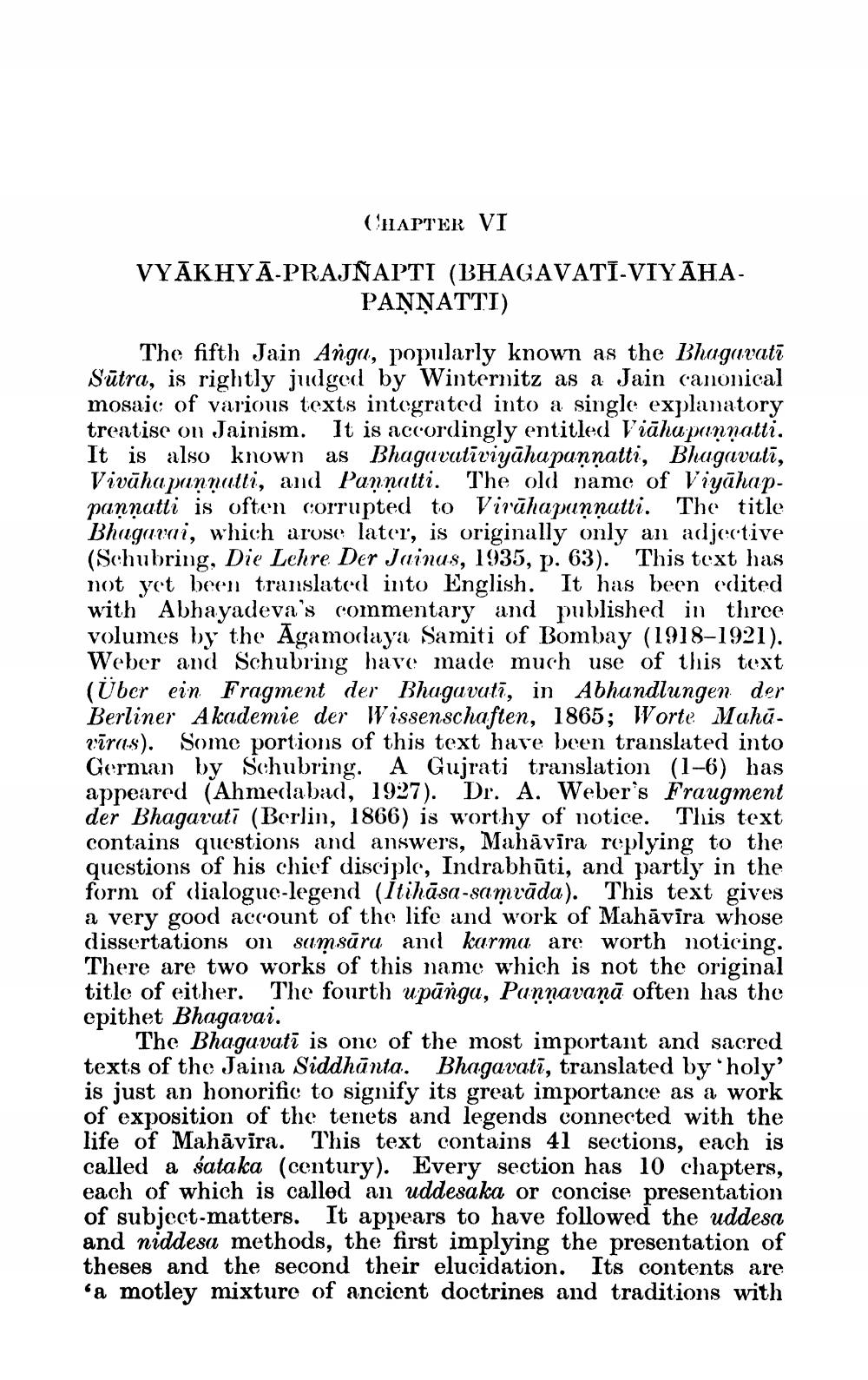________________
CHAPTER VI
VYĀKHYA-PRAJÑAPTI (BHAGAVATI-VIYAHA
PAŅŅATTI)
The fifth Jain Anga, popularly known as the Bhagavatī Sūtra, is rightly judged by Winternitz as a Jain canonical mosaic of various texts integrated into a single explanatory treatise on Jainism. It is accordingly entitled Viāhapannatti. It is also known as Bhagavatīviyāhapannatti, Bhagavatī, Vivāhapannutti, and Pannatti. The old name of Viyāhappannatti is often corrupted to Virāhapannatti. The title Bhagavai, which arose later, is originally only an adjective (Schubring, Die Lehre Der Jainus, 1935, p. 63). This text has not yet been translated into English. It has been edited with Abhayadeva's commentary and published in three volumes by the Agamodaya Samiti of Bombay (1918-1921). Weber and Schubring have made much use of this text (Über ein Fragment der Bhagavatī, in Abhandlungen der Berliner Akademie der Wissenschaften, 1865; Worte. Mahuvīras). Some portions of this text have been translated into German by Schubring. A Gujrati translation (1-6) has appeared (Ahmedabad, 1927). Dr. A. Weber's Fraugment der Bhagavati (Berlin, 1866) is worthy of notice. This text contains questions and answers, Mahāvīra replying to the questions of his chief disciple, Indrabhūti, and partly in the form of dialogue-legend (itihāsa-samvāda). This text gives a very good account of the life and work of Mahāvīra whose dissertations on samsāru and karma are worth noticing. There are two works of this name which is not the original title of either. The fourth u pānga, Pannavanā often has the epithet Bhagavai.
The Bhagavati is one of the most important and sacred texts of the Jaina Siddhānta. Bhagavatī, translated by holy' is just an honorific to signify its great importance as a work of exposition of the tenets and legends connected with the life of Mahāvira. This text contains 41 sections, each is called a sataka (century). Every section has 10 chapters, each of which is called an uddesaka or concise presentation of subject-matters. It appears to have followed the uddesa and niddesa methods, the first implying the presentation of theses and the second their elucidation. Its contents are 'a motley mixture of ancient doctrines and traditions with




